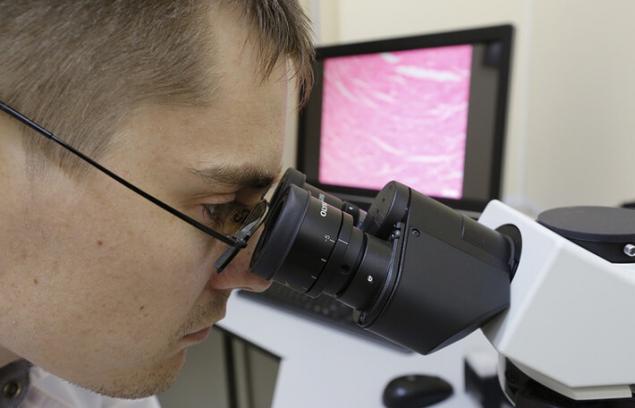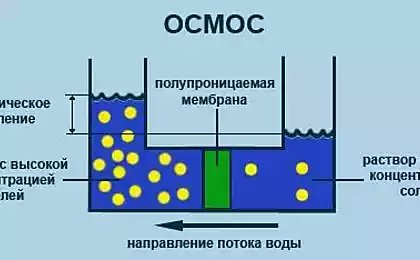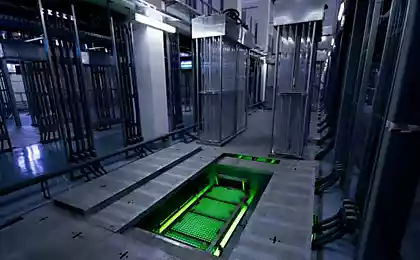553
Russian scientists have discovered an environmentally safe method of air purification
Russian scientists have developed air purification technology almost all, with rare exceptions, organic toxic substances and carbon monoxide with use of nanomaterials and sunlight. About it the correspondent of TASS said the head of research, Professor of MSU, head of the laboratory of radiospectroscopy Elizabeth Konstantinova.

"Our technology can be used to clean the air in medical institutions, in domestic premises and for neutralization of harmful emissions at the enterprises. It is based on the interaction of titanium dioxide and of light of the solar spectrum, which decompose the toxins in the water and carbon dioxide," said she. Elizabeth Konstantinova was one of the keynote speakers at the International conference on conversion and storage of solar energy (International Conference on Photochemical Conversion and Storage of Solar Energy, IPS), which took place in St. Petersburg from 25 to 29 July. The forum was first held in Russia, hosted by St. Petersburg state University. Environmental safety According to Konstantinova, the new technology can be used to create filters for air purification. "The word filter involves the accumulation of harmful substances. We don't have it! The filter is not clogged, the harmful substances are decomposed completely to a simple and harmless — water, the basis of life, and carbon dioxide, which we exhale," said the Professor. This is due to the photocatalysis process, in which the catalyst is a powder of titanium dioxide with a particle size of about nanometers, and a necessary condition is exposure to sunlight. "Nano-objects that are visible only in electronic microscope, have a high specific surface area: the surface area of nanomaterials per gram of the substance reaches 700-800 sq m, and the whole surface is open to molecules from the environment," — said Konstantinov. Ultraviolet light is not needed During the research, the scientists set a goal to avoid the use of UV lamps are used for disinfection of premises, such as hospitals. "First, the ultraviolet light harmful to humans in large quantities, and secondly, these rays is very little in the natural solar spectrum and requires a special lamp filled with inert gas with mercury vapor. This makes the device expensive and inconvenient to use: on the one hand we purify the air, and with another — risking to pollute less dangerous substance," — said the Agency interlocutor. "We were looking for a material that would interact well with ordinary sunlight or a substitute is with the common incandescent lamps," — said Elizabeth Konstantinova. The desired properties was found for titanium dioxide. Scientists have been able to manufacture and structure of the nanomaterial in the form of interconnected balls, which ensured its high specific surface area, which provides the speed of chemical reaction by removal from the air of harmful molecules. On stage — devices for Fundamental study of the process conducted, the technology for producing material with desired properties patented. All this was done on a grant from the Ministry of education in the amount of 12 million rubles."I'm a scientist, not an engineer. Of course, I understand that our development can become a tool if you put it in the right case. Industrial filters could look like camera - tips on pipe emissions of enterprises", — said the Professor.

According to the calculations of Elizabeth Konstantinova, industrial filters could be applied to 80% of the Earth's surface, where enough sunlight from the Equatorial zone up to the middle band. "It would be ideal to complement reagent chamber a solar battery to enable it to accumulate solar energy, and as a result, the device would work steadily at any level of lighting," says the Professor. In areas where sunlight is insufficient, you can replace it with incandescent lamps. All this will make new method of air disinfection at a much lower price than the currently used, and therefore more mass, I'm sure the scientist. published
Source: www.energy-fresh.ru/news/?id=13475

"Our technology can be used to clean the air in medical institutions, in domestic premises and for neutralization of harmful emissions at the enterprises. It is based on the interaction of titanium dioxide and of light of the solar spectrum, which decompose the toxins in the water and carbon dioxide," said she. Elizabeth Konstantinova was one of the keynote speakers at the International conference on conversion and storage of solar energy (International Conference on Photochemical Conversion and Storage of Solar Energy, IPS), which took place in St. Petersburg from 25 to 29 July. The forum was first held in Russia, hosted by St. Petersburg state University. Environmental safety According to Konstantinova, the new technology can be used to create filters for air purification. "The word filter involves the accumulation of harmful substances. We don't have it! The filter is not clogged, the harmful substances are decomposed completely to a simple and harmless — water, the basis of life, and carbon dioxide, which we exhale," said the Professor. This is due to the photocatalysis process, in which the catalyst is a powder of titanium dioxide with a particle size of about nanometers, and a necessary condition is exposure to sunlight. "Nano-objects that are visible only in electronic microscope, have a high specific surface area: the surface area of nanomaterials per gram of the substance reaches 700-800 sq m, and the whole surface is open to molecules from the environment," — said Konstantinov. Ultraviolet light is not needed During the research, the scientists set a goal to avoid the use of UV lamps are used for disinfection of premises, such as hospitals. "First, the ultraviolet light harmful to humans in large quantities, and secondly, these rays is very little in the natural solar spectrum and requires a special lamp filled with inert gas with mercury vapor. This makes the device expensive and inconvenient to use: on the one hand we purify the air, and with another — risking to pollute less dangerous substance," — said the Agency interlocutor. "We were looking for a material that would interact well with ordinary sunlight or a substitute is with the common incandescent lamps," — said Elizabeth Konstantinova. The desired properties was found for titanium dioxide. Scientists have been able to manufacture and structure of the nanomaterial in the form of interconnected balls, which ensured its high specific surface area, which provides the speed of chemical reaction by removal from the air of harmful molecules. On stage — devices for Fundamental study of the process conducted, the technology for producing material with desired properties patented. All this was done on a grant from the Ministry of education in the amount of 12 million rubles."I'm a scientist, not an engineer. Of course, I understand that our development can become a tool if you put it in the right case. Industrial filters could look like camera - tips on pipe emissions of enterprises", — said the Professor.

According to the calculations of Elizabeth Konstantinova, industrial filters could be applied to 80% of the Earth's surface, where enough sunlight from the Equatorial zone up to the middle band. "It would be ideal to complement reagent chamber a solar battery to enable it to accumulate solar energy, and as a result, the device would work steadily at any level of lighting," says the Professor. In areas where sunlight is insufficient, you can replace it with incandescent lamps. All this will make new method of air disinfection at a much lower price than the currently used, and therefore more mass, I'm sure the scientist. published
Source: www.energy-fresh.ru/news/?id=13475























